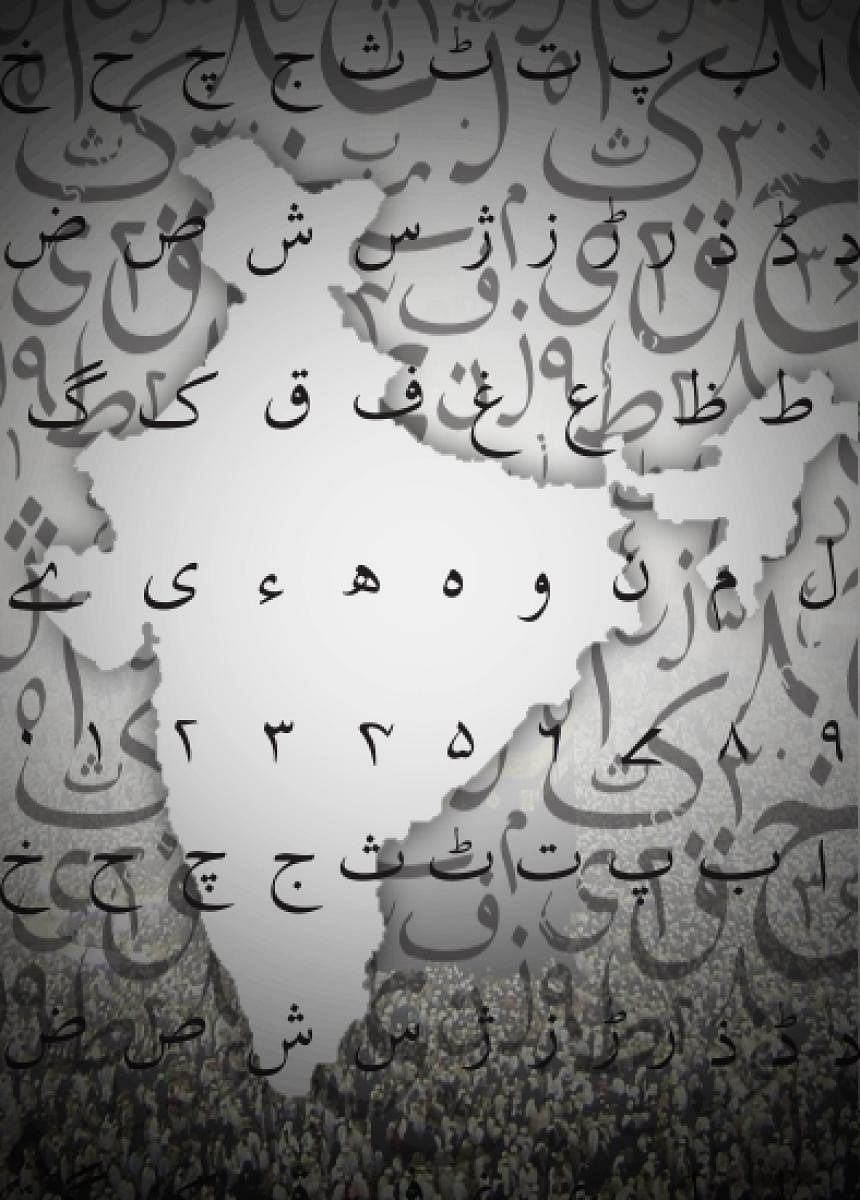The Urdu language in India has faced many turbulent times since Independence — due to pressure brought upon by the government, Hindi chauvinists, and sometimes the ineffectiveness of Urdu literary education itself. In 1947, when Partition happened and Pakistan became a reality, a great shift was made in the maintenance of Urdu language. Many Urdu experts argue that its survival in India was difficult in the immediate period after Independence. Many organisations and individuals, with and without the support of the government, have worked to preserve the language and ensure Urdu education to younger generations.
Until Partition, Urdu enjoyed tremendous cultural prestige among educated North Indian Muslims and Hindus as well as among the more conscientious British administrators. Urdu was also the first literary language for many who also wrote in Hindi. Upendranath Ashk and Munshi Premchand were famous Urdu authors before they even began to write in Hindi.
Among Urdu writers of the 19th century, the most renowned is Asadullah Khan Ghalib (1797-1869) who is described by Muhammad Sadiq in his book ‘A History of Urdu Literature’ as a visionary who “broke away from the past both in thought and style, he stands at the threshold of the modern world.” Another famous literary figure was Muhammad Iqbal (1878-1938), one of the most influential and controversial Urdu poets of the early 20th century.
In the field of the short story, one of the most powerful modern Urdu writers was Sadat Hassan Manto (1912-55). Although since the agony of Partition the use of Urdu has become increasingly restricted to Pakistan and among Indian Muslims, it is still the primary literary language of many Hindus and Sikhs.
In the early years of Independence, in what may be called the heartland of Urdu — Uttar Pradesh and Bihar — the state governments worked to discontinue the use of Urdu. The somewhat twisted interpretation of the three-language formula devised by the Government of India was the tool with which they attacked Urdu. The three-language formula recommended that in every state, three languages should be taught in schools — Hindi, another modern Indian language or language of the state, and English.
In Uttar Pradesh, Urdu should have been chosen as one of the three languages as it was the language of most inhabitants after Hindi. The state government of Uttar Pradesh, and some other Hindi-Urdu speaking states, chose Sanskrit as the modern language. Urdu, which was taught in schools before Independence, was discontinued.
From Indira Gandhi’s time onward, the Government of India has had its own political reasons for supporting Urdu literature. During her time, a committee was set up in 1972, headed by I K Gujral, to consider how the cause of Urdu could be advanced. The report was shelved due to vigorous opposition to its recommendations. In 1990, Ali Sardar Jafari investigated the committee reports, and found that 95% of the recommendations made by the Gujral report had not been adopted. However, in 1989, the state governments of Bihar and Uttar Pradesh recognised, on paper, Urdu as an official language.
Many Urdu-speakers in India, who are not limited to the Muslim community, do not know the Urdu written script. Thus, giving these people access to Urdu literary works in the Devanagari script would further the cause of Urdu.
Politicisation of Urdu
One of the great scholars of Urdu literature, Gopi Chand Narang, was quoted as saying that “Urdu is not the language of Muslims. If at all there is any language of Muslims, it should be Arabic. Urdu belongs to the composite culture of India. Hindi and Urdu are supplementary and complementary. They are like sisters strengthening each other.” This viewpoint must also be adopted by the organisations created to preserve Urdu; they should focus their resources and attention on the accurate writing of Urdu classics and translation into Devanagari script.
Narang felt that the politicisation of the Urdu cause has caused harm to the language, which should function as a bridge between the Hindu and Muslim subcultures within India. If government and state-funding went into the production of texts of important and popular Urdu authors in Devanagari script, the reading of Urdu literature would grow tremendously. Although many scripts have been reproduced in Devanagari script, major organisations have not yet made it their endeavour to help publish such works. The translation of classical Urdu texts into English is another venture that has been undertaken but still needs to be done on a larger scale.
The Urdu language has seen many shifts in support throughout its long history — the language falls in and out of favour with the people and changing governments. The National Council for Promotion of Urdu language has taken the initiative and has been bringing out publications in or about Urdu language and literature. Many people and organisations have been working to uphold the use of the Urdu language, although these efforts are not without their flaws. It is the mix of these efforts, along with popular interest developed by films and ongoing research, that will ensure that classical Urdu texts will be preserved and promoted.
(The writer is a linguist and author and teaches at Aligarh Muslim University)
